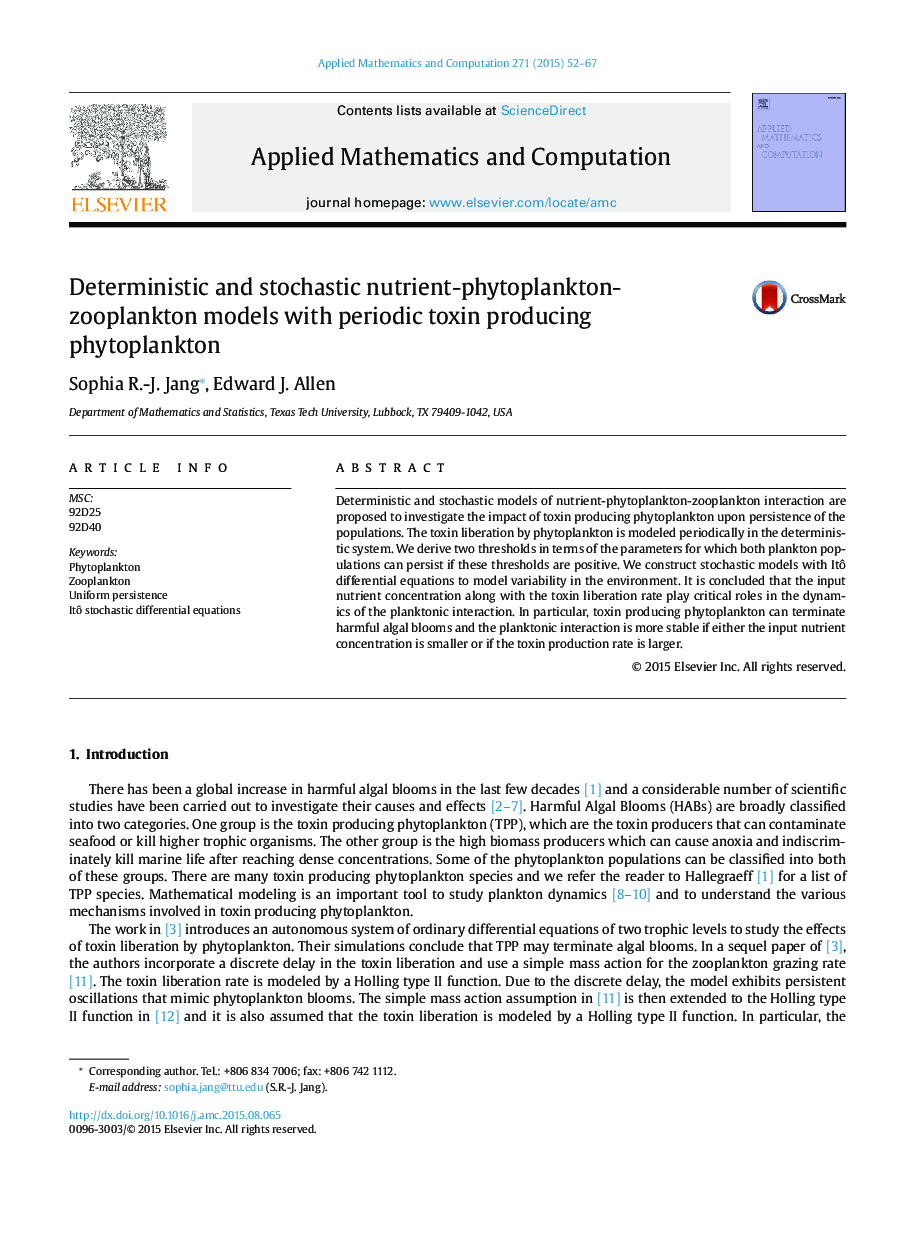| Article ID | Journal | Published Year | Pages | File Type |
|---|---|---|---|---|
| 4626138 | Applied Mathematics and Computation | 2015 | 16 Pages |
•Deterministic and stochastic nutrient-phytoplankton-zooplankton models with toxin producing phytoplankton are studied.•The input nutrient concentration and the toxin liberation rate play critical roles in the plankton dynamics.•Periodic toxin liberation by phytoplankton can complicate plankton interactions.•Harmful algal blooms can be diminished if the maximal toxin liberation rate is large.
Deterministic and stochastic models of nutrient-phytoplankton-zooplankton interaction are proposed to investigate the impact of toxin producing phytoplankton upon persistence of the populations. The toxin liberation by phytoplankton is modeled periodically in the deterministic system. We derive two thresholds in terms of the parameters for which both plankton populations can persist if these thresholds are positive. We construct stochastic models with Itô differential equations to model variability in the environment. It is concluded that the input nutrient concentration along with the toxin liberation rate play critical roles in the dynamics of the planktonic interaction. In particular, toxin producing phytoplankton can terminate harmful algal blooms and the planktonic interaction is more stable if either the input nutrient concentration is smaller or if the toxin production rate is larger.
